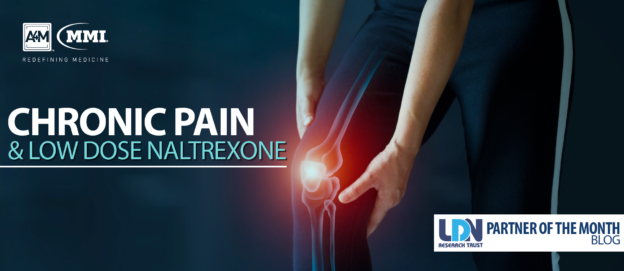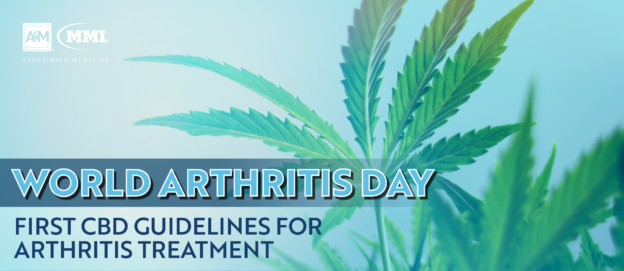Chronic Pain and Low Dose Naltrexone
Naltrexone is a class of drug known as an opiate antagonist. It is licensed for use in treating opiate and alcohol dependence at doses of between 50 mg and 300 mg daily. At these doses, the opioid receptors are blocked for an extended period, thus suppressing the cravings for opiates or alcohol.
The first clinician to record immunological effects of Low Dose Naltrexone (LDN) was Dr Bernard Bihari in 1985. His primary line of research at that time was with HIV/AIDS. He was trying to improve the survival rate of seriously immune-compromised patients.
Dr Bihari knew from previous research that endorphins were significantly involved in the regulation of the immune system, it was an ingenious step to try treatment with LDN. On finding that giving LDN daily to his patients improved their outcomes dramatically, it inspired a plethora of research on the importance of endorphins and opiate antagonists to the regulation of the immune system.
Over the next 29 years, Dr Ian Zagon championed the fundamental research into endorphins and LDN. He published almost 300 papers on the subject and it was confirmed, without doubt, that the endorphin/opiate receptor system is involved in virtually every biological system that regulates immune response.
The Mechanism of Action of LDN
The first thing to understand about the mechanism of action is that Naltrexone – the drug in LDN – comes in a 50:50 mixture of 2 different forms (called isomers). It has recently been discovered that one form binds to immune cells, while the other variant binds to opioid receptors. Although consisting of precisely the same components, the two isomers appear to have different biological activity.
Levo-Naltrexone (the left-handed version) is an antagonist for the opiate/endorphin receptors
o This causes increased endorphin release
o Increased endorphins modulate the immune response
o This reduces cell proliferation via endorphins
Dextro-Naltrexone (the right-handed version) is an antagonist for at least one, if not more, immune cells and is reported to:
o Antagonise “TLR,” suppressing cytokine modulated immune system
o Antagonise TLR-mediated production of NF-kB – reducing inflammation, potentially downregulating oncogenes
How LDN Works for Pain
It was found that low doses of naltrexone, at 1/10th of the dose used for opiate dependence, has beneficial effects on those suffering from many autoimmune disorders.
For chronic pain patients, the central nervous system gets overwhelmed; pain signals become out of control and drown the body’s natural pain-relieving systems. Temporary blockage of the opiate receptors prompts the body to upregulate endogenous opioids and receptors. This rebound effect restores balance to the opioid system.
The main goal of LDN is to slow or halt the progression of the disease. When LDN normalises the immune system, it halts the further progression of autoimmune disease, relieving inflammation and pain and consequently stress, which often leads to exacerbations of a wide variety of autoimmune conditions. Aside from better pain control, benefits derived from the use of LDN include decreased fatigue, improved mood, reduced sleep disturbances, and enhanced cognitive function.
Trials and Studies
There are many clinical trials for the use of LDN for the treatment of autoimmune conditions such as Myalgic Encephalomyelitis/Chronic Fatigue Syndrome (ME/CFS), Fibromyalgia (FM), Complex Regional Pain Syndrome (CRPS), Sjogren’s Syndrome, Stiff Person Syndrome, Neuropathic Corneal Pain and LDN for Cancer. Past papers for these conditions and more are on the LDN Research Trust website.1 The list of illnesses that have shown benefit from LDN is long, but most are the result of just one thing – a dysfunctional immune system.
Sjogren’s Syndrome
Is a chronic autoimmune disorder that causes inflammation of the lacrimal and salivary glands that results in dry eyes and mouth as well as fatigue and musculoskeletal pain. A case study conducted by Scott Zashin describes a 47-year-old female who had no improvement on standard therapy for five years from diagnosis. After that time, the lady sought a second opinion from Scott Zashin and she elected to try LDN therapy. After two weeks she reported feeling “Terrific” and her lab work showed normal for ESR, CRP and ALT. After some adjustments to dosage over time, the patient noted significant benefit with her fatigue and pain. While her symptoms improved, what was most interesting about the case was that her clinical improvement was associated with an improvement in her inflammatory markers.2
ME/CFS
Is a medical condition that limits physical and cognitive functions, and there is no known effective treatment. One retrospective open-label study concluded that a study should be initiated to confirm the feasibility of LDN to alleviate the symptoms of ME/CFS.3 In this study, 46% of the group experienced no adverse side effects, 54% reported mild and temporary adverse effects (commonly transient insomnia, vivid dreams and headaches). In comparison, almost 74% reported varying degrees of symptomatic relief during LDN therapy.
Kent Holtorf, MD, authored a chapter in “The LDN Book – How a Little-Known Generic Drug – Low Dose Naltrexone – Could Revolutionize Treatment for Autoimmune Diseases, Cancer, Autism, Depression and More”, Edited by Linda Elsegood. In his chapter, he describes treating Chronic Fatigue and Fibromyalgia patients with LDN. Dr Holtorf’s treatment plan is to
- Stabilise the patient
- Enhance mitochondrial function
- Balance the hormones
- Treat the immune dysfunction
- Treat any infections/immune components
- Address any unique etiologies
- Adjust treatment as needed
Of all of these steps, he declares that step 4 is possibly the most important aspect of the treatment and a therapeutic trial of LDN should be considered in the majority of these patients not on narcotic pain medication. Now that the use of uLDN (ultra Low Dose Naltrexone) is known to help increase the efficacy of opioids while weaning patients off it, LDN may possibly be used in that circumstance too.
In a peer reviewed and published analysis of over five hundred CFS and FM patients, on Dr Holtorf’s treatment plan, 94% of patients had overall improvement at the fourth visit, 75% noted a significant overall improvement, 62% reported substantial overall improvement and the average energy level and sense of well-being for patients doubled by the fourth visit.4 Standard treatment for these conditions involves drugs with unpleasant side effects such as muscle relaxants, antidepressants, NSAIDS and some physiotherapy – these only minimally addressed the symptoms and ignored the cause entirely.
A review published by Joyce et al found that “Of 26 studies identified, four studied fatigue in children, and found that 54-94% of children recovered over the periods of follow-up. Another five studies operationally defined chronic fatigue syndrome in adults and found that less than 10% of subjects return to pre-morbid levels of functioning, and the majority remain significantly impaired”.5 Compare these results to Dr Holtorf’s analysis, and there is a clear case for his method and the use of LDN in cases of ME/CFS and FM.
Complex Regional Pain Syndrome (CRPS)
CRPS is predominantly nerve pain that usually starts after some form of trauma. CRPS is said to be the most painful condition known to exist and is quite common. A case study by Pradeep Chopra, MD, of a 15-year-old girl who developed CRPS after she sprained her left ankle: the pain suffered by this patient got steadily worse over a three-year period despite many tests that appeared normal, extensive physical therapy, spinal injections and medications. The pain started to mirror in her right leg, and the condition worsened to the point where she was confined to a wheelchair suffering constant pain. At the age of 18, after one attempted suicide and other complications arising such as muscle atrophy, dystonia to the left ankle and postural orthostatic tachycardia syndrome, the patient was started on a treatment of low dose IV ketamine and LDN. She showed a good initial response to ketamine and the ketamine was reduced and stopped after three months just leaving her on the LDN with significant improvement in pain and function. Within a year, along with physiotherapy, she was able to get rid of her wheelchair and now walks unaided.6
Rheumatic and Arthritic Pain
Clinical research on LDN in rheumatic disease and arthritis, in general, is limited; however, one pharmacoepidemiologic study tested the hypothesis that the use of LDN reduced the use of conventional rheumatic disease medications. In a controlled before and after study, prescriptions were looked at a year before and a year after the patients commenced LDN and the outcomes showed the differences in the drugs dispensed. The results of the study suggested that the compliant use of LDN reduced the dispensing of several medications used in rheumatoid and seropositive arthritis, drugs such as DMARDS, NSAIDs and Opiates. In conclusion, the authors state that “The results support the hypothesis that persistent use of LDN reduces the need for medication used in the treatment of rheumatic and seropositive arthritis. Randomised clinical trials on LDN in rheumatic disease are warranted.”7
Dosing Guide – LDN and uLDN
The prescribing regimen for LDN depends on the condition being treated and of course on the individual as each can be different regarding toleration, lifestyle, other drugs prescribed etc. In general, the guide is to start low and slowly work up from 0.1mg to 4.5 mg over a period of weeks or months. If side effects occur, then the advice is to halve the dose and build up slowly again – this usually resolves the issue with side effects.
Because LDN is a potent opioid antagonist, the use of LDN for patients on opioid pain medication is not recommended for fear of triggering an opioid withdrawal reaction. However, ultra Low Dose Naltrexone (uLDN) can be used in micro doses alongside opioids to help wean patients off opioids without going through withdrawal symptoms and still controlling pain. After a few weeks, patients take Low Dose Naltrexone (LDN) to control the pain or use LDN alongside other medication.
The LDN Research Trust has recently released a documentary regarding Opioids and Pain Management and how LDN can assist with treatment, this documentary can be found here: https://www.ldnresearchtrust.org/ldn-documentaries-english or on YouTube https://www.youtube.com/watch?v=3mZX77vSY1w&t=2128s
Conditions where LDN could be of benefit
Go to https://www.ldnresearchtrust.org/conditions
The LDN Book Volume 2 Launch and Tour
Starting October 14th 2020 https://www.ldnresearchtrust.org/ldn-book-2-launch-and-tour
______________________________________________________________________________
- https://www.ldnresearchtrust.org/ldn-clinical-trials
- Scott Zashin, “Sjogren’s Syndrome: Clinical Benefits of Low Dose Naltrexone Therapy”, Cureus, 11, 3 (March 2019), e4225, https://doi:10.7759/cureus.4225
- Olli Polo, Pia Pesonen & Essi Tuominen, (2019) “Low-Dose Naltrexone in the Treatment of Myalgic Encephalomyelitis/Chronic Fatigue Syndrome (ME/CFS)”, Fatigue: Biomedicine, Health & Behavior, 7, 4 (2019), 207-217: https://doi:10.1080/21641846.2019.1692770
- Power point presentation, Kent Holtorf, MD https://www.ldnresearchtrust.org/sites/default/files/Dr%20Kent%20Holtorf%20LDN%20and%20CFS-FM_0.pdf
- J. Joyce, M. Hotopf and S. Wessely, “The Prognosis of Chronic Fatigue and Chronic Fatigue Syndrome: a Systemic Review”, QJM: An International Journal of Medicine, 90, 3 (March 1997) 223-33. https://doi.org/10.1093/qjmed/90.3.223
- Pradeep Chopra, MD, https://www.ldnresearchtrust.org/sites/default/files/Manangement%20of%20chronic%20pain%20with%20LDN%20-%20Chopra%202017.pdf
- Guttorm Raknes and Lars Småbrekke, “Low Dose Naltrexone: Effects on Medication in Rheumatoid and Seropositive Arthritis. A Nationwide Register-Based Controlled Quasi-Experimental Before-After Study”, Plos One, Research Article (February 2014), https://doi.org/10.1371/journal.pone.0212460



